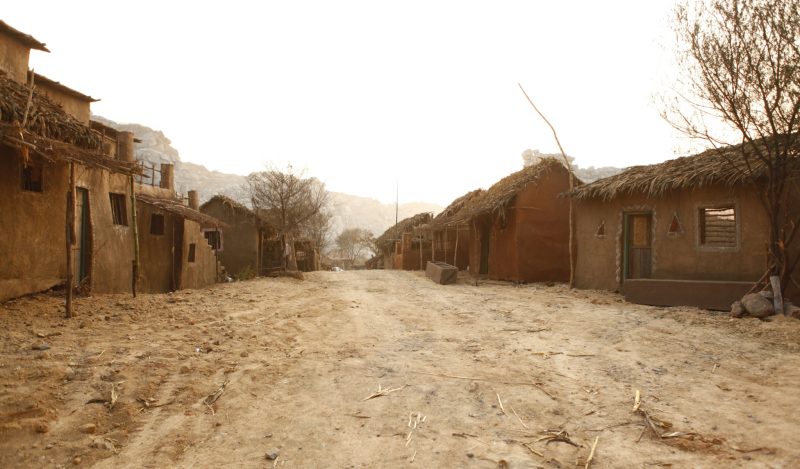Lockdown sceptics have wrestled since the beginning with what one might call the ‘conspiracy question.’ How far was all of this – lockdowns, social distancing, the push for rapid and universal vaccination – coordinated and arranged, and were there other motives at work than a naïve but well-intentioned effort to ‘stop the spread?’
Given the sheer speed with which it all happened and the way leaders around the world seemed to be in lockstep, not only with each other but with the bosses of social media companies, the pharmaceutical industry, and the academy, it is perhaps natural for the sceptically inclined to have picked up the scent of a few rats. Future historians will likely ascribe the madness of the Covid era to something much more prosaic and accidental: the power statistics have to motivate action.
Lionel Trilling, the literary critic, elucidated this facet of our nature with characteristic eloquence. ‘When once we have made our fellow men the objects of our enlightened interest,’ he put it, something within us causes us to then ‘go on and make them the objects of our pity, then of our wisdom, ultimately of our coercion.’ It is this chain of causation – from knowledge to compassion, from compassion to the application of expertise, and from expertise to the imposition of control – that is most important in understanding lockdown and associated measures. We see in it the basic pattern for everything that happened in that crazy spring of 2020.
But first, it is important to step back a little and put into dialogue two thinkers who, on the face of it, have little in common: Gertrude Himmelfarb and Michel Foucault. In his 1977-78 lecture series delivered at the Collège de France, Foucault turned his attention to the early modern period, roughly 1500-1800, and the crystallisation of the modern state.
Characteristically, he took a skewed perspective on this episode in history. His interest was not in the events which brought about the formation of the earliest states, in England, France and Portugal. He was, rather, interested in the intellectual conditions which made it possible for people to conceive that such a thing as a state could exist in the first place. What was it that caused people to look around themselves, notice what had come into being, and ascribe to it ‘statehood?’
There were of course many such causes, but one of the most important was the discovery that there was such a thing as a territory’s ‘population’ – and, crucially, that the population could itself be a field of action. It had, in other words, characteristics that could be improved upon. This discovery was foundational in bringing the state into being, because it meant that, all of a sudden, there could be an interest in governing – and a concomitant creation of many of the apparatus of modern government, such as a civil service.
Prior to the early modern period, Foucault tells us, medieval Christendom had understood the world to be, essentially, a staging post awaiting the Second Coming, and life within it therefore understood as a kind of interim phase. There was therefore no real interest in a ruler improving the physical lot of people on Earth; what really mattered was the condition of their souls. But when Western science and medicine began to replace this religious conception of the universe with a secular, rationalistic one, the idea began to emerge that the world was one of ‘open historicity:’ it was not merely a stepping stone to paradise, but had a past and a future which mattered in their own right. All of a sudden, it thereby became possible to conceive of such a thing as improvement and progress in the physical realm, and indeed to identify in them the central tasks of a ruler.
This was, of course, contingent upon the idea that there was such a thing as the ‘population’ of a territory, and that there were features of that population – its poverty rate, its suicide rate, its health, its literacy, and so on – that could be improved. And contingent upon that was the emerging science of statistics. Through statistics, the ruler could not just identify features of the population, but also measure how those features changed across time – his people did not just have a poverty rate (say, the number of people with an income below a certain threshold), but had a poverty rate that could be made to decline.
The development of statistics was bound up, therefore, in the conception of population as something which did not just exist as a kind of ‘natural phenomenon’ – the bunch of people happening to live in a territory – but could be opened up and exposed to the knowledge of the ruler, and then acted upon so as to make it better. This would then itself lead to an explosion in bureaucracy, as the ruler sought to find out more about the population and improve its productivity (more tax), its health (better soldiers), and so on.
Statistics were therefore paramount in the process whereby the vast apparatus of governance which the state deploys came into being. More importantly, the emergence of statistics was a spur to action. The mere act of ‘knowing’ the population was then a call to improve it; once one ‘knows’ its poverty rate (or whatever) then the question which inevitably follows is what can be done to achieve statistical improvement.
One can think of this as a positive feedback mechanism in which statistical measures give rise to bureaucracies whose job is to make improvements in the underlying phenomena being measured – which causes them to generate more statistics, and thus identify further need for improvement, and so on. Thus, it became necessary to think about something called ‘the state’ because of the organic emergence of its apparatus, arising through intrinsic processes of development – something which Foucault called its ‘governmentalisation.’
Foucault’s interest was in how measuring the population gave rise to ‘biopolitics’ – the exercising of power upon the population as though it was an organism, and the concomitant growth in interest in particular in its health. Naturally enough, given the period in which he was writing, this caused his analysis to veer into the logic of raison d’Etat: he understood the biopolitical urge as essentially caught up in questions of how to make the state stronger (with a healthier and more productive population) than its rivals.
To put words in his mouth somewhat, the reason why the growing state bureaucracy sees a statistical measurement such as, say, the suicide rate in the population and seeks to ‘improve’ it (by reducing it, in this case), was because a population with a high suicide rate is one which is weaker than it would otherwise be vis-à-vis its competitor states. This may indeed have been an important factor in the process I have described. But the emphasis on raison d’Etat caused Foucault to overlook the more important feature of the bio-politicisation of the state: compassion, or the drive to improve the lot of the population as an end in itself.
In her two masterpieces, The Idea of Poverty and Poverty and Compassion, Himmelfarb sheds more light on the connection between knowledge and action, and in particular the role which compassion played in the process. She begins by telling us the story of how the problem of ‘the poor’ came into being in the early modern period, and how it went on to animate the imagination of the chattering classes of England in the 18th and 19th centuries. In the 16th century, she reminds us, the dominant view of the poor was that they would ‘always be with us’ – poverty was considered to be the normal lot of certain classes, and indeed even ennobling of their members. It was certainly not considered to be the duty of the ruler to make the poor wealthier. Yet by the late 19th century the position had totally changed: it was now considered to be one of the main, if not the main, task of the state to improve the material conditions of the population.
What had happened in the interim, of course, was exactly the process Foucault had identified. It had become possible both to conceive of the population as a thing in its own right, with characteristics (like the overall poverty rate) that could be improved, and to measure that improvement with purportedly objective and accurate statistics.
Himmelfarb, however, is able to marshal her vast range of philosophical, political, literary and historical sources to demonstrate that the desire to ‘improve’ the poverty rate (by making it decline) did not derive to any great extent from a need to make the nation stronger versus its rivals. Far from it; it derived from an earnest desire to make life better for the poor. It came, in other words, from sheer compassion – shock at the suffering which poverty brought with it, and the corresponding impulse to eliminate that suffering. Crucially, of course, statistical measurement of poverty made all of this possible, because it gave us both a reason to act and a method by which we could assess success or failure.
What we have here, of course, is a playing out of the first two-thirds of Trilling’s schema. The conceptualisation of the population as a field of action, and the measurement of statistical phenomenon within it – the taking of an ‘enlightened interest’ in it – gives rise to both ‘pity,’ or compassion, and the application of ‘wisdom’ to resolve its problems. What is left, of course, is coercion, and we do not need to look far to identify it in the many means by which the modern state subjects the population to a kind of Tocquevillian ‘soft despotism,’ constantly manipulating, cajoling and maneuvering it this way and that for its own good, whether through compulsory state education or ‘sin taxes’ or anything in between.
During the Covid era, we see the same schema writ large in the responses taken by governments across the globe. For the first time in human history, the availability of mass testing allowed us to convince ourselves that we could measure the health of the population, holistically, in real time, and to generate precise statistics permitting us to do so – right down to the last ‘case’ or ‘death.’
What happened as a consequence was almost inevitable: the arousal of compassion, or ‘pity,’ for those who were dying; the application of ‘wisdom’ to prevent suffering, in the form of the vast array of ‘expertise’ (I use the word advisedly) deployed to help us ‘socially distance,’ and later to jab, jab and jab again; and, of course, ultimately coercion, in the lockdowns, the vaccine mandates, the travel restrictions, and so on.
It is understandable to seek to identify conspiracy in complex phenomena. There’s no doubt that there were many actors who stood to gain from the hysterical reaction to the Covid pandemic, and who were therefore disincentivised to approach the matter with calmness.
Those of us who seek to get to the bottom of how this mess was made need, however, to dig into the deeper forces which motivate social action and imbue it with its meaning. The connection between statistical measurement and the impulse to act, motivated chiefly by compassion (often misplaced, but genuine), seems to me to be the most sensible area in which to search.
Published under a Creative Commons Attribution 4.0 International License
For reprints, please set the canonical link back to the original Brownstone Institute Article and Author.









